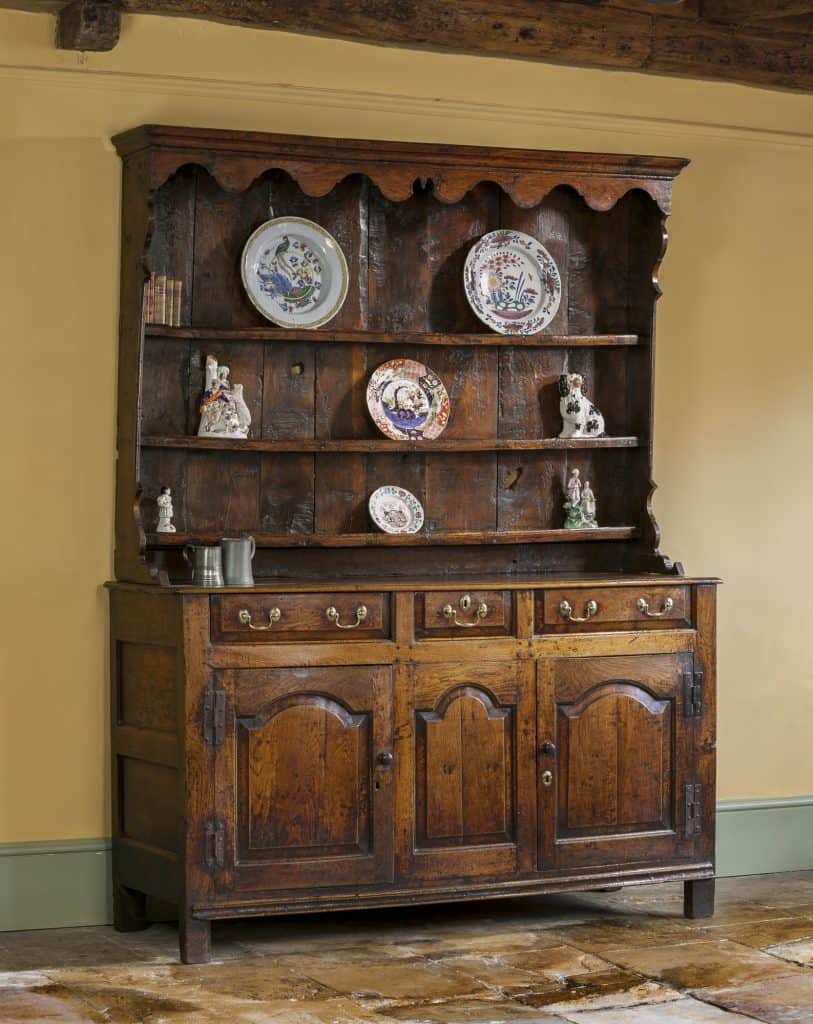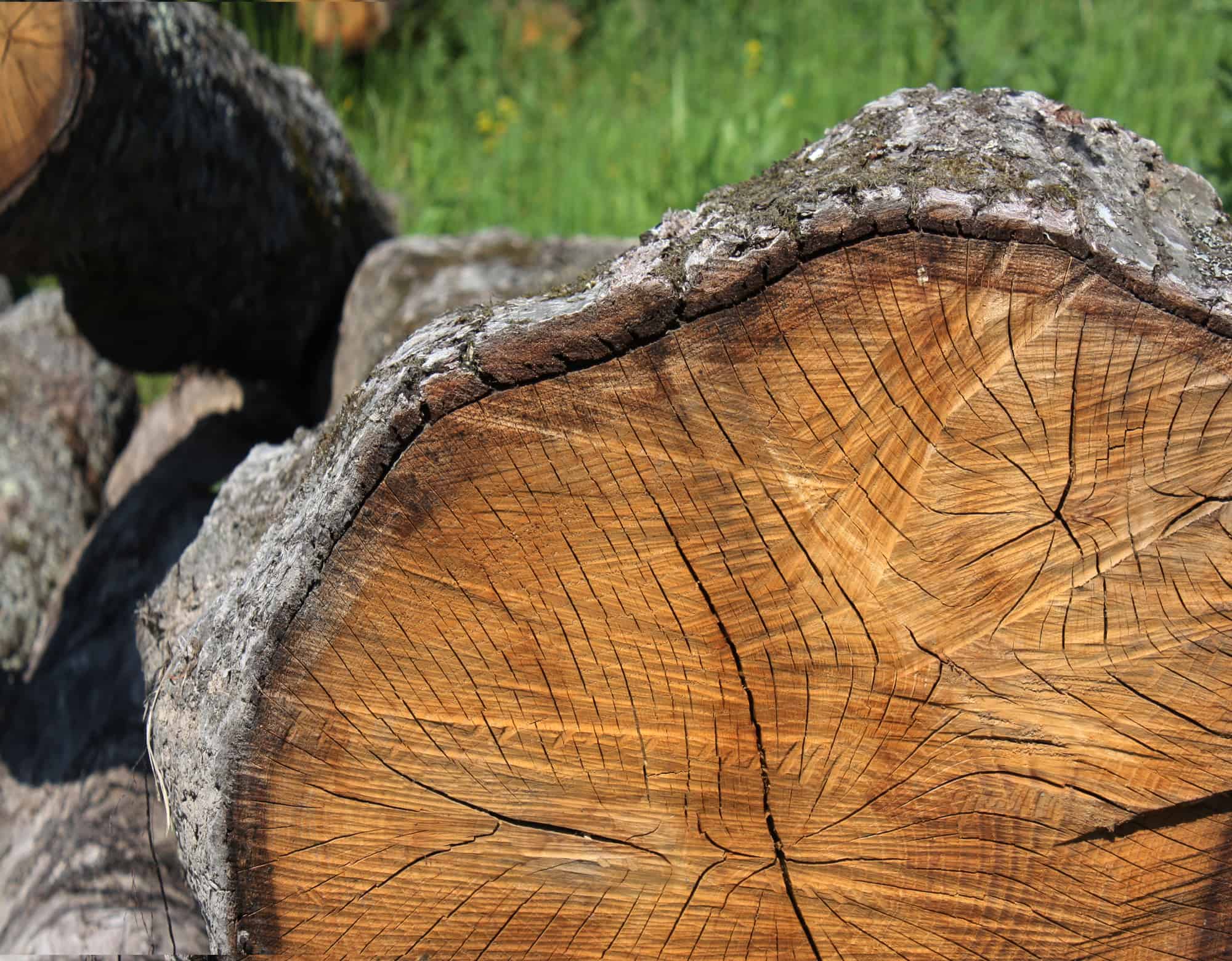Oak wood is prized among furniture makers due to its natural durability, moderate ease of workability, and gorgeous finishes. In addition to those advantages, some species like white oak contain chemicals that make it naturally resistant to water.
Being one of the most common trees in North America, it’s clear why the wood is so common among furniture and home projects. In fact, you might assume that oak is the perfect wood.
I definitely understand the impulse but unfortunately, nothing is perfect. There are many reasons why someone looking for furniture, installing flooring, or shopping for handcrafted boats may look the other way.
So, what are the disadvantages of using oak wood?
Generally, the disadvantages of both white oak and red oak boil down to its heaviness, cost, commonality, intense grain pattern, and reduced workability in detail-oriented projects. Additionally, red oak fades and warps when exposed to the elements. White oak doesn’t have this problem but is 10% heavier as a result.
Let’s dive in and explore each aspect on it’s own so you can determine whether oak is the wood you want to reach for.
Heaviness
Oak has a reputation for being durable and that durability causes it to weigh more than other woods. Wood magazine reports that well-dried, seasoned oak has a density of about 3.6 pounds per board foot. Similarly, another website has the weight at 45 pounds per cubic foot.
These weights don’t mean much by themself, as we don’t have anything to compare them to. However, let’s look at a list of competitor woods and their respective weights.
| Type of wood | Weight (per board foot) | Weight (per cubic foot) |
|---|---|---|
| Red Oak | 3.6 pounds | 44 lbs/ft3 |
| White Oak | 4 pounds | 48 lbs/ft3 |
| Cherry | 3 pounds | 36 lbs/ft3 |
| Maple | 2.8 pounds | 34 lbs/ft3 |
| Pine (White) | 3 pounds | 36 lbs/ft3 |
As you can see, white oak is as much as 40% heavier than other woods popular in woodworking.
Many folks are out there right now saying “So what? Heavy furniture is ideal — it just means your set will stay in one place.” And honestly, they have a bit of a point. However, if your personal situation causes you to move your outdoor furniture regularly, that heaviness can soon be a major disadvantage.
Those same folks are now saying “How often can someone really move their furniture?”
I’ll testify that it happens far more often than one might think. Here are just some of the many reasons why you might want to move your furniture:
- You have kids and they decide they want to use the area for activities.
- It’s time to spring clean the area.
- A pet’s toy rolls under the piece of furniture.
- The furniture is in the way of something you’re moving through the house.
- You move!
Additionally, the toe stub factor is much higher depending on how heavy the furniture is!
Cost
Next, let’s examine another disadvantage of oak compared to other woods — the cost. Before the wood police come after me, let me just go ahead and get something out of the way.
Red oak can be fairly affordable. In fact, the price as of this article being posted was around $6.80 per board foot. This is only slightly more expensive than woods like cherry and maple. However, white oak is almost 50% more expensive at $9 per board foot.
| Type of wood | Cost (USD) |
|---|---|
| Red Oak | $6.80 per board foot |
| White Oak | $9.00 per board foot |
| Cherry | $6.45 per board foot |
| Maple | $4.80 per board foot |
| Pine (White) | $2.15 per board foot |
At this point, you’re probably wondering why white oak is so expensive, especially when compared to red oak.
Being ideal for barrel construction and a prerequisite for making aged whiskey, white oak owes its elevated price to the bourbon industry. The elevated number of distilleries combined with the fact that the U.S. requires distillers to use new oak barrels for every new batch means that white oak is over 150% more expensive than just a decade ago.
To put it another way, you’re competing with bourbon distilleries every time you purchase white oak.
With cost out of the way, let’s take a look at a couple of disadvantages that are a bit more intangible than cost and weight.
Commonality
Let’s face it, oak is one of the most common furniture and flooring materials available today. While many people don’t consider this to be a problem, those that want a unique look may turn their nose up at using white oak for anything permanent in their dwelling.
To be clear, I am not one of those people! I love oak for what it is — a sturdy wood with an ornate grain pattern.
However, many people want their house to be an extension of themselves. Because of this, many turn up their nose at something so popular. To their credit, it is true that there are hundreds of other types of hardwoods you can reach for instead of oak (like acacia!).
If I wanted uniqueness, I would instead reach for ebony or mahogany, or rosewood. Of course, I would also be paying an arm and a leg for the privilege. But as they say, there’s no such thing as a free lunch. Generally, less common also means more expensive!
Intense Grain Pattern
There is an entire generation of people raised on Pinterest that simply cannot stand the look of wood-grain. I’m not sure when it happened, but if you ask most people under 30 years of age what they think about a beautiful old dresser treated with linseed oil, they’re going to have some strong negative opinions.
It stands to reason then that those negative opinions are more dramatic when the wood grain itself is more defined. And oak’s intense grain pattern is a defining feature of the wood. Let’s take a look at an example:

The above is a gorgeous piece of human history and to my eye looks amazing. However, there’s an entire emerging culture out there that prefer dull pastels and sanitized bright white rooms with no wood in sight.
If this describes you, the intense grain pattern of oak is a definite disadvantage.

